Development, Research, Optimization and Experiment of Exoskeleton Robot for Hand Rehabilitation Training
Abstract
1. Introduction
2. Materials and Methods
2.1. Design of Hand Function Rehabilitation Robot
2.1.1. Hand Structure and Structure Design of Rehabilitation Robot
2.1.2. Design of Control Hardware
2.1.3. Rehabilitation Training Model and Software
2.2. Kinematics and Motion Simulation of Hand Exoskeleton Robot
2.3. Optimal Design of Exoskeleton Hand Robot Based on Topology Optimization
2.3.1. Finite Element Analysis of Hand Rehabilitation Robot
2.3.2. Robot Optimization Based on Topology Method
3. Results
3.1. Hand Function Rehabilitation Robot Prototype
3.2. Hand Rehabilitation Prototype and Parameter Comparison after Topology Optimization
3.3. Hand Rehabilitation Prototype and Parameter Comparison after Topology Optimization
4. Discussion
5. Conclusions
Author Contributions
Funding
Institutional Review Board Statement
Informed Consent Statement
Data Availability Statement
Conflicts of Interest
References
- Long, Y.; Peng, Y. Development and Validation of a Robotic System Combining Mobile Wheelchair and Lower Extremity Exoskeleton. J. Intell. Robot. Syst. 2022, 104, 1–12. [Google Scholar] [CrossRef]
- Ye, W.; Li, Z.; Yang, C.; Chen, F.; Su, C.Y. Motion detection enhanced control of an upper limb exoskeleton robot for rehabilitation training. Int. J. Hum. Robot. 2017, 14, 1650031. [Google Scholar] [CrossRef]
- Shi, L.; Yu, Y.; Xiao, N.; Gan, D.; Wei, W. Biologically Inspired and Rehabilitation Robotics 2020. Appl. Bionics Biomech. 2022, 2022, 9852938. [Google Scholar] [CrossRef] [PubMed]
- Li, X.; Liu, J.; Li, W.; Huang, Y.; Zhan, G. Force Transmission Analysis and Optimization of Bowden Cable on Body in a Flexible Exoskeleton. Appl. Bionics Biomech. 2022, 2022, 5552166. [Google Scholar] [CrossRef] [PubMed]
- Gull, M.A.; Bai, S.; Bak, T. A review on design of upper limb exoskeletons. Robotics 2020, 9, 16. [Google Scholar] [CrossRef]
- Cao, D.; Wang, J.; Liu, N. Research on human sports rehabilitation design based on object-oriented technology. J. Healthc. Eng. 2021, 2021, 6626957. [Google Scholar] [CrossRef] [PubMed]
- Sarac, M.; Solazzi, M.; Frisoli, A. Design requirements of generic hand exoskeletons and survey of hand exoskeletons for rehabilitation, assistive, or haptic use. IEEE Trans. Haptics 2019, 12, 400–413. [Google Scholar] [CrossRef]
- Vélez-Guerrero, M.A.; Callejas-Cuervo, M.; Mazzoleni, S. Design, Development, and Testing of an Intelligent Wearable Robotic Exoskeleton Prototype for Upper Limb Rehabilitation. Sensors 2021, 21, 5411. [Google Scholar] [CrossRef]
- Fazli, E.; Rakhtala, S.M.; Mirrashid, N.; Karimi, H.R. Real-time implementation of a super twisting control algorithm for an upper limb wearable robot. Mechatronics 2022, 84, 102808. [Google Scholar] [CrossRef]
- Chen, Z.; Guo, Q.; Xiong, H.; Jiang, D.; Yan, Y. Control and Implementation of 2-DOF Lower Limb Exoskeleton Experiment Platform. Chin. J. Mech. Eng. Ji Xie Gong Cheng Xue Bao 2021, 34, 22. [Google Scholar] [CrossRef]
- Secciani, N.; Brogi, C.; Pagliai, M.; Buonamici, F.; Gerli, F.; Vannetti, F.; Bianchini, M.; Volpe, Y.; Ridolfi, A. Wearable Robots: An Original Mechatronic Design of a Hand Exoskeleton for Assistive and Rehabilitative Purposes. Front. Neurorobot. 2021, 15, 750385. [Google Scholar] [CrossRef] [PubMed]
- Moreno-SanJuan, V.; Cisnal, A.; Fraile, J.C.; Pérez-Turiel, J.; de-la-Fuente, E. Design and characterization of a lightweight underactuated RACA hand exoskeleton for neurorehabilitation. Robot. Auton. Syst. 2021, 143, 103828. [Google Scholar] [CrossRef]
- Sarac, M.; Solazzi, M.; Leonardis, D.; Sotgiu, E.; Bergamasco, M.; Frisoli, A. Design of an Underactuated Hand Exoskeleton with Joint Estimation. In Advances in Italian Mechanism Science; Springer: Cham, Switzerland, 2017; pp. 97–105. [Google Scholar]
- Aragón-Martínez, A.; Arias-Montiel, M.; Lugo-González, E.; Tapia-Herrera, R. Two-finger exoskeleton with force feedback for a mobile robot teleoperation. Int. J. Adv. Robot. Syst. 2020, 17, 1729881419895648. [Google Scholar] [CrossRef]
- Refour, E.M.; Sebastian, B.; Chauhan, R.J.; Ben-Tzvi, P. A General Purpose Robotic Hand Exoskeleton with Series Elastic Actuation. J. Mech. Robot. 2019, 11, 060902. [Google Scholar] [CrossRef] [PubMed]
- Carbone, G.; Gerding, E.C.; Corves, B.; Cafolla, D.; Russo, M.; Ceccarelli, M. Design of a Two-DOFs Driving Mechanism for a Motion-Assisted Finger Exoskeleton. Appl. Sci. 2020, 10, 2619. [Google Scholar] [CrossRef]
- Ceccarelli, M.; Morales-Cruz, C. A prototype characterization of ExoFinger, a finger exoskeleton. Int. J. Adv. Robot. Syst. 2021, 18, 17298814211024880. [Google Scholar] [CrossRef]
- Hernández-Santos, C.; Davizón, Y.A.; Said, A.R.; Soto, R.; Felix-Herrán, L.C.; Vargas-Martínez, A. Development of a Wearable Finger Exoskeleton for Rehabilitation. Appl. Sci. 2021, 11, 4145. [Google Scholar] [CrossRef]
- Almusawi, H.; Husi, G. Design and Development of Continuous Passive Motion (CPM) for Fingers and Wrist Grounded-Exoskeleton Rehabilitation System. Appl. Sci. 2021, 11, 815. [Google Scholar] [CrossRef]
- Chowdhury, A.; Nishad, S.S.; Meena, Y.K.; Dutta, A.; Prasad, G. Hand-Exoskeleton Assisted Progressive Neurorehabilitation using Impedance Adaptation based Challenge Level Adjustment Method. IEEE Trans. Haptics 2018, 12, 128–140. [Google Scholar] [CrossRef]
- Kim, U.; Jung, D.; Jeong, H.; Park, J.; Jung, H.M.; Cheong, J.; Choi, H.R.; Do, H.; Park, C. Integrated linkage-driven dexterous anthropomorphic robotic hand. Nat. Commun. 2021, 12, 7177. [Google Scholar] [CrossRef]
- Vanteddu, T.; Ben-Tzvi, P. Stable Grasp Control with a Robotic Exoskeleton Glove. J. Mech. Robot. 2020, 12, 061015. [Google Scholar] [CrossRef] [PubMed]
- Castiblanco, J.C.; Mondragon, I.F.; Alvarado-Rojas, C.; Colorado, J.D. Assist-As-Needed Exoskeleton for Hand Joint Rehabilitation Based on Muscle Effort Detection. Sensors 2021, 21, 4372. [Google Scholar] [CrossRef] [PubMed]
- Ou, Y.K.; Wang, Y.L.; Chang, H.C.; Chen, C.C. Design and Development of a Wearable Exoskeleton System for Stroke Rehabilitation. Healthcare 2020, 8, 18. [Google Scholar] [CrossRef] [PubMed]
- Jo, I.; Park, Y.; Lee, J.; Bae, J. A portable and spring-guided hand exoskeleton for exercising flexion/extension of the fingers. Mech. Mach. Theory 2019, 135, 176–191. [Google Scholar] [CrossRef]
- Zhang, F.; Lin, L.; Yang, L.; Fu, Y. Design of an Active and Passive Control System of Hand Exoskeleton for Rehabilitation. Appl. Sci. 2019, 9, 2291. [Google Scholar] [CrossRef]
- Li, M.; He, B.; Liang, Z.; Zhao, C.G.; Chen, J.; Zhuo, Y.; Xu, G.; Xie, J.; Althoefer, K. An Attention-Controlled Hand Exoskeleton for the Rehabilitation of Finger Extension and Flexion Using a Rigid-Soft Combined Mechanism. Front. Neurorobot. 2019, 13, 34. [Google Scholar] [CrossRef]
- Cheng, L.; Chen, M.; Li, Z. Design and Control of a Wearable Hand Rehabilitation Robot. IEEE Access 2018, 6, 74039–74050. [Google Scholar] [CrossRef]
- Li, K.; Li, Z.; Zeng, H.; Wei, N. Control of Newly-Designed Wearable Robotic Hand Exoskeleton Based on Surface Electromyographic Signals. Front. Neurorobot. 2021, 15, 711047. [Google Scholar] [CrossRef]
- Lu, Z.; Tong, K.Y.; Shin, H.; Li, S.; Zhou, P. Advanced Myoelectric Control for Robotic Hand-Assisted Training: Outcome from a Stroke Patient. Front. Neurol. 2017, 8, 107. [Google Scholar] [CrossRef]
- Xu, P.; Xia, D.; Li, J.; Zhou, J.; Xie, L. Execution and perception of upper limb exoskeleton for stroke patients: A systematic review. Intell. Serv. Robot. 2022, 15, 557–578. [Google Scholar] [CrossRef]
- Souhail, A.; Vessakosol, P. Low cost soft robotic gloves for at-home rehabilitation and daily living activities. J. Autom. Mob. Robot. Intell. Syst. 2019, 13, 14–26. [Google Scholar]
- Ahmed, T.; Assad-Uz-Zaman, M.; Islam, M.R.; Gottheardt, D.; McGonigle, E.; Brahmi, B.; Rahman, M.H. Flexohand: A Hybrid Exoskeleton-Based Novel Hand Rehabilitation Device. Micromachines 2021, 12, 1274. [Google Scholar] [CrossRef] [PubMed]
- Birouaș, F.I.; Țarcă, R.C.; Dzitac, S.; Dzitac, I. Preliminary Results in Testing of a Novel Asymmetric Underactuated Robotic Hand Exoskeleton for Motor Impairment Rehabilitation. Symmetry 2020, 12, 1470. [Google Scholar] [CrossRef]
- Kabir, R.; Sunny, M.S.; Ahmed, H.U.; Rahman, M.H. Hand Rehabilitation Devices: A Comprehensive Systematic Review. Micromachines 2022, 13, 1033. [Google Scholar] [CrossRef] [PubMed]
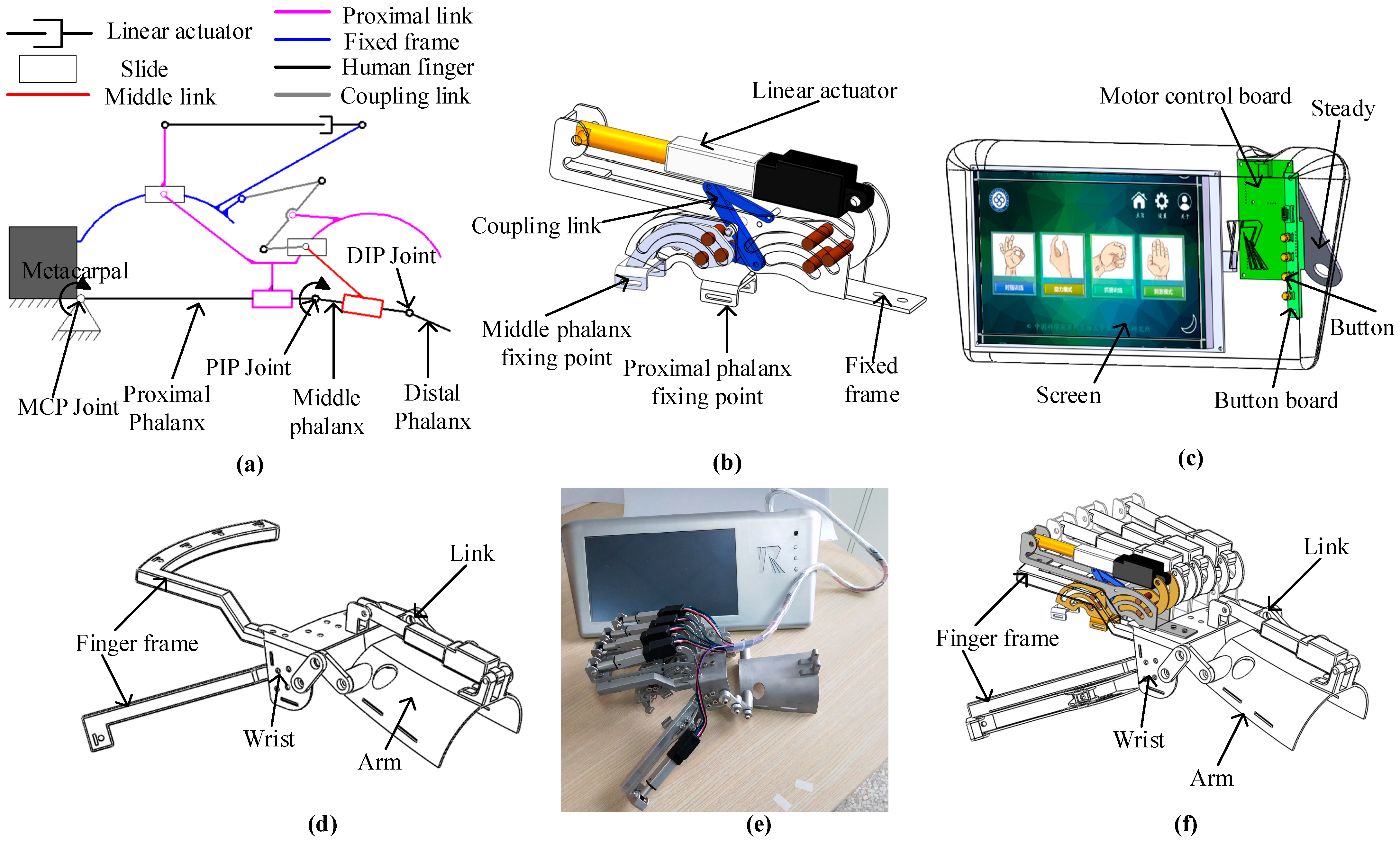


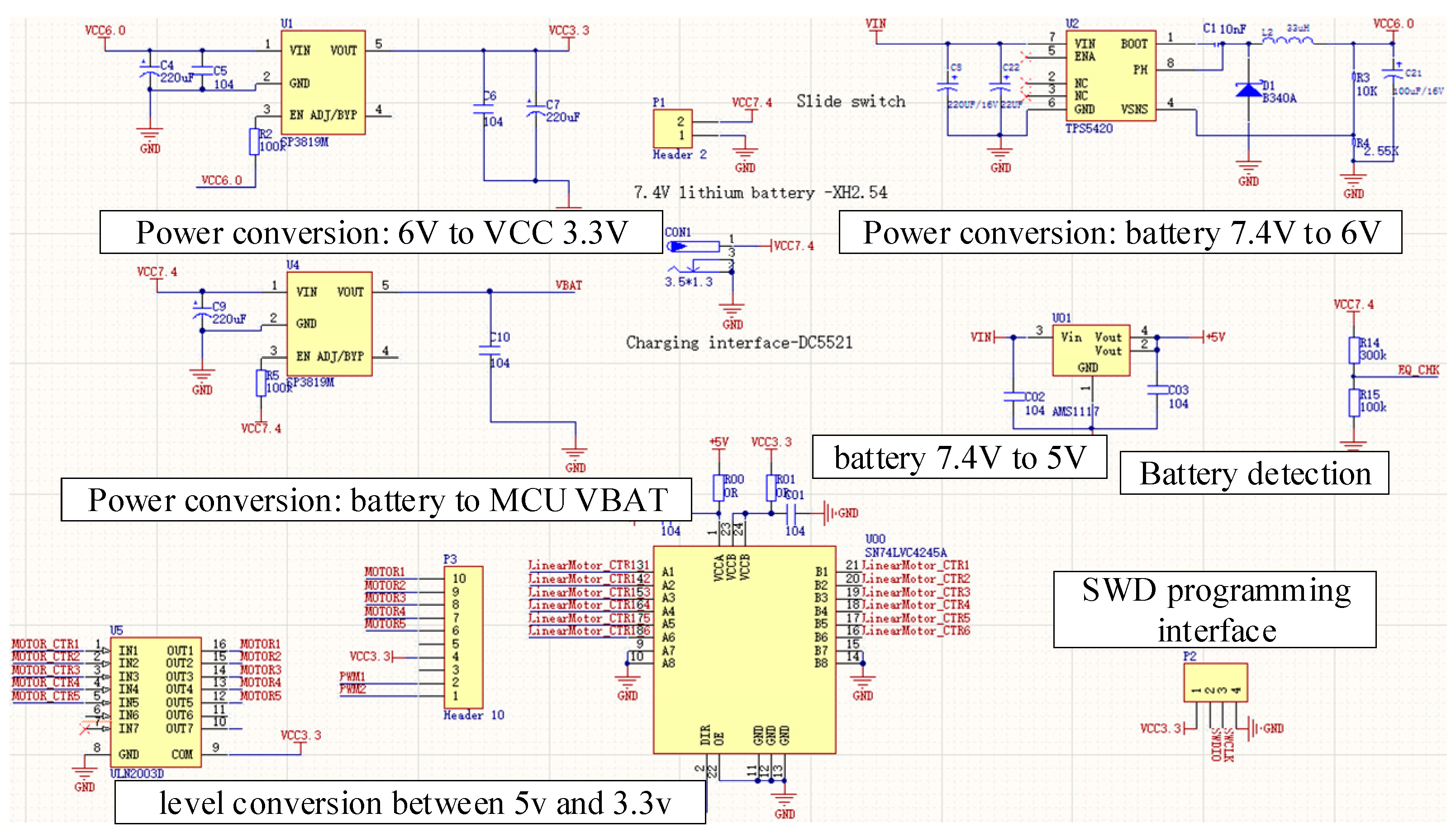

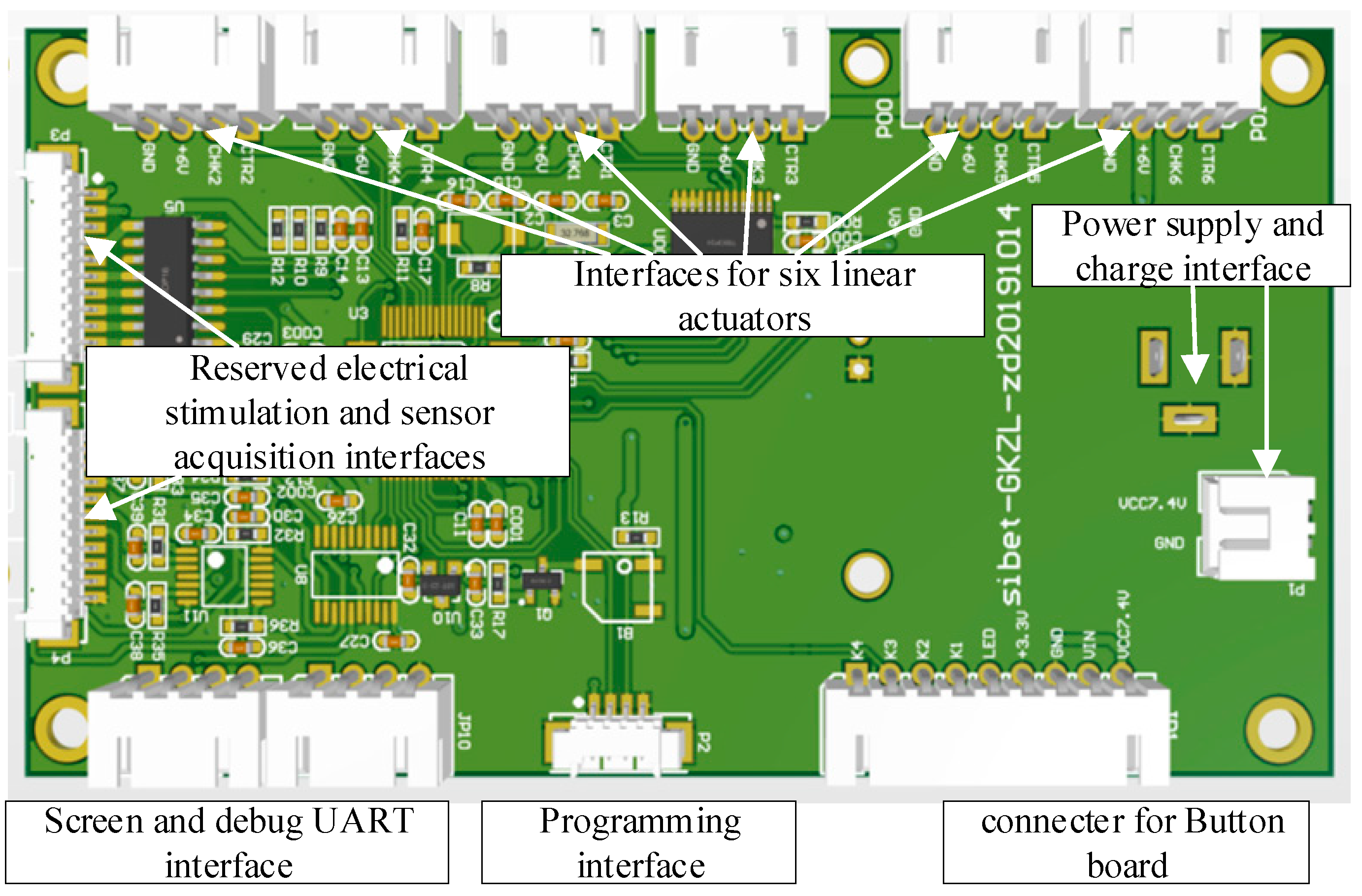
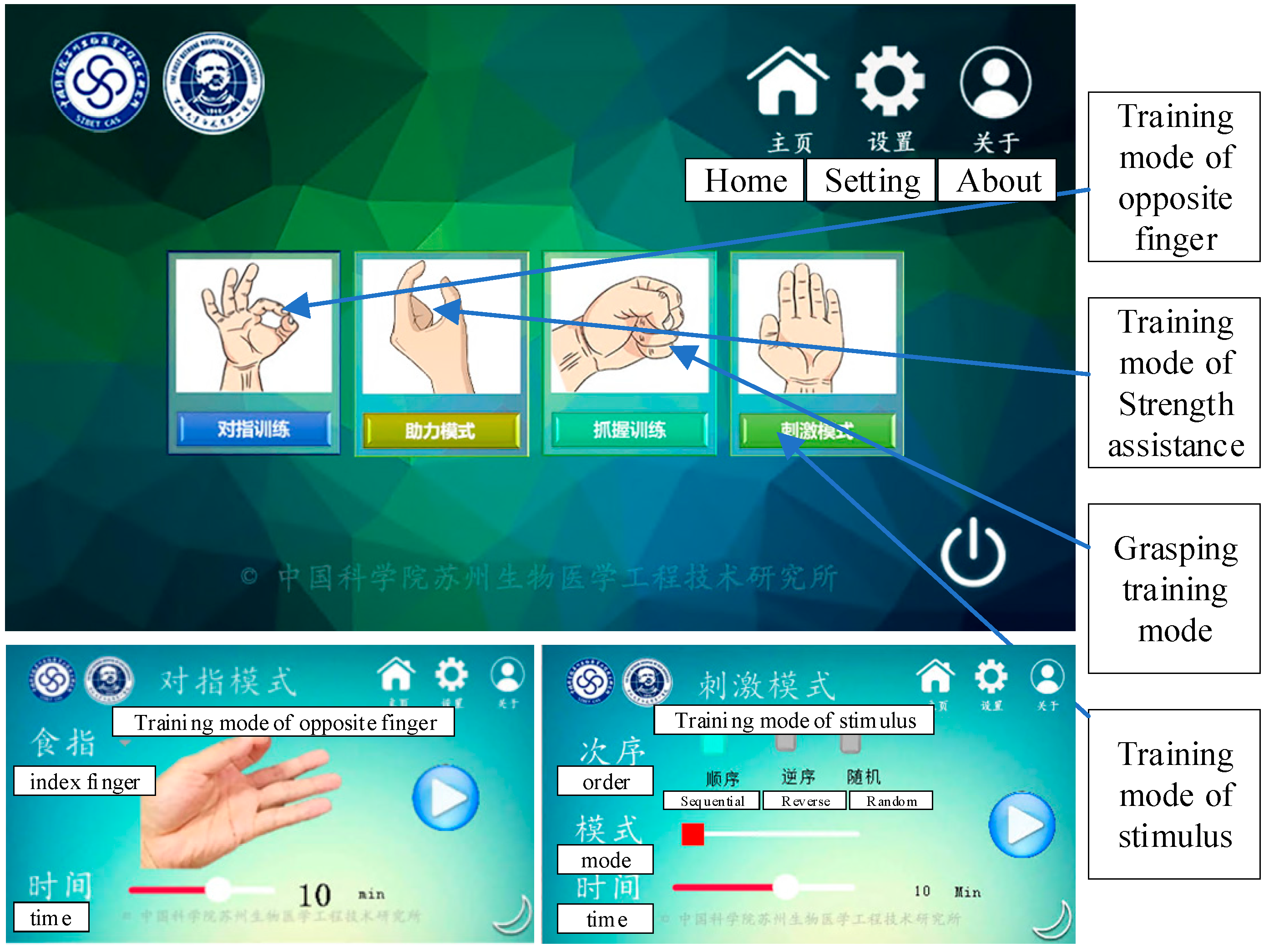
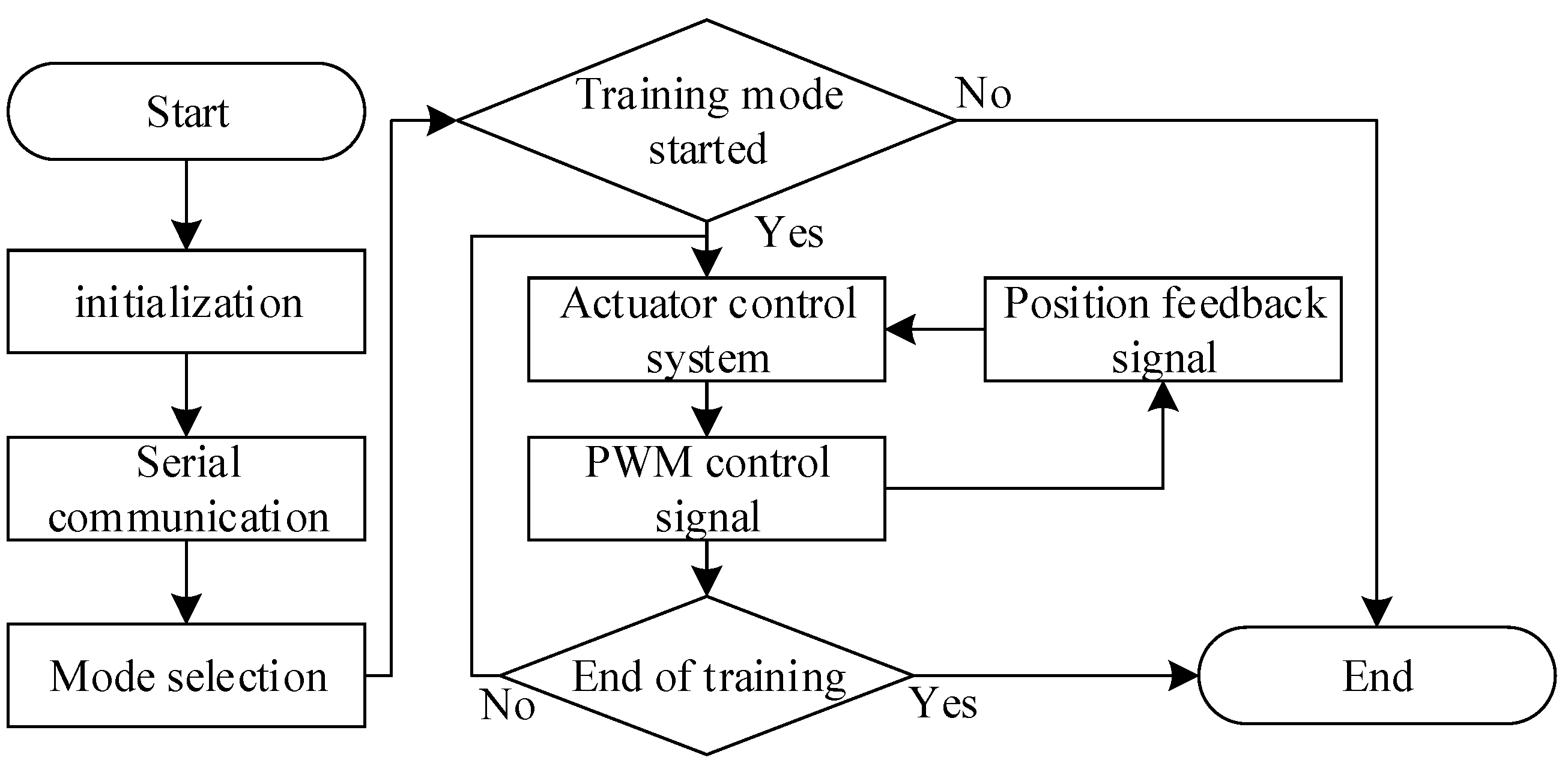
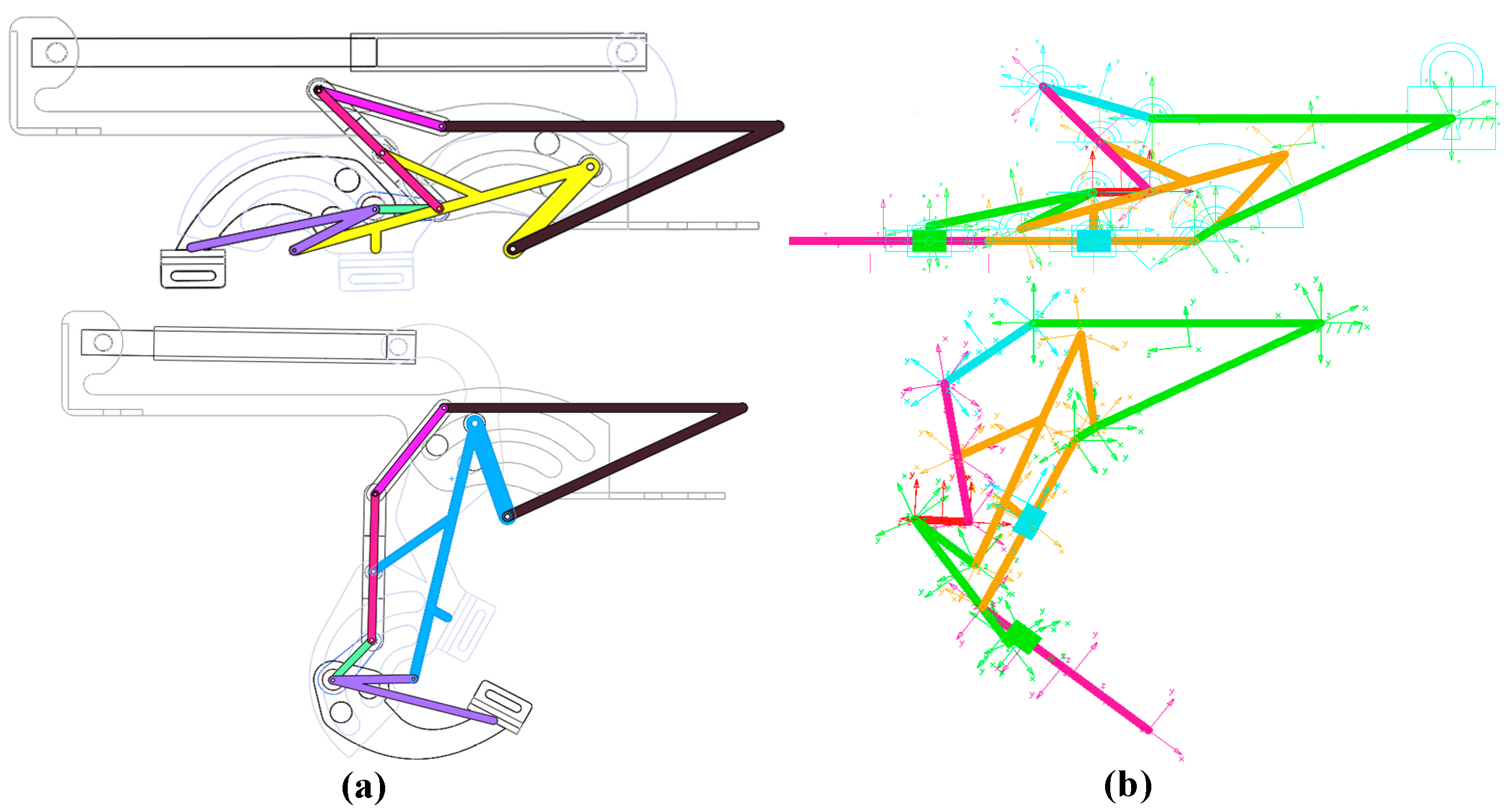
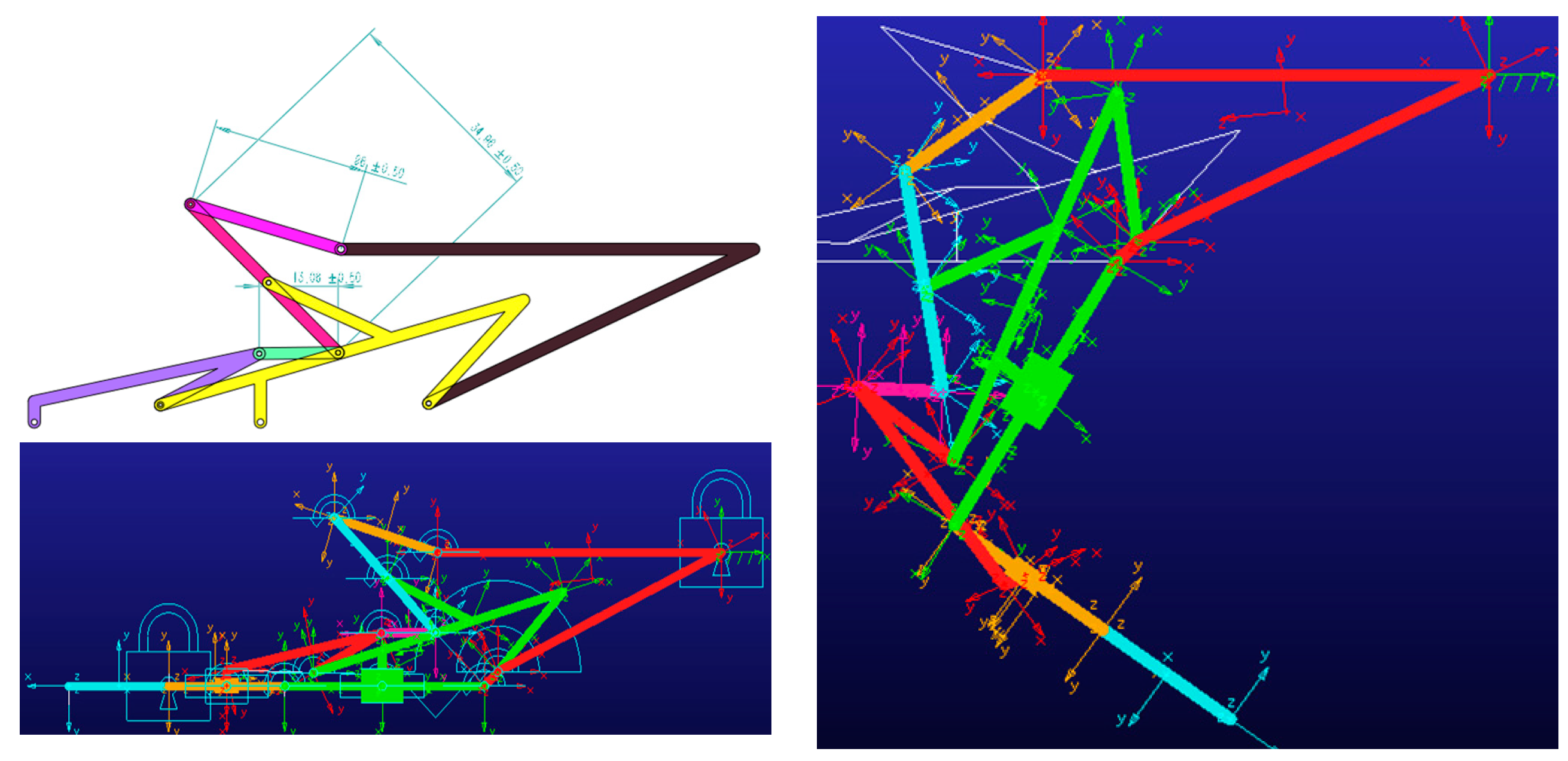
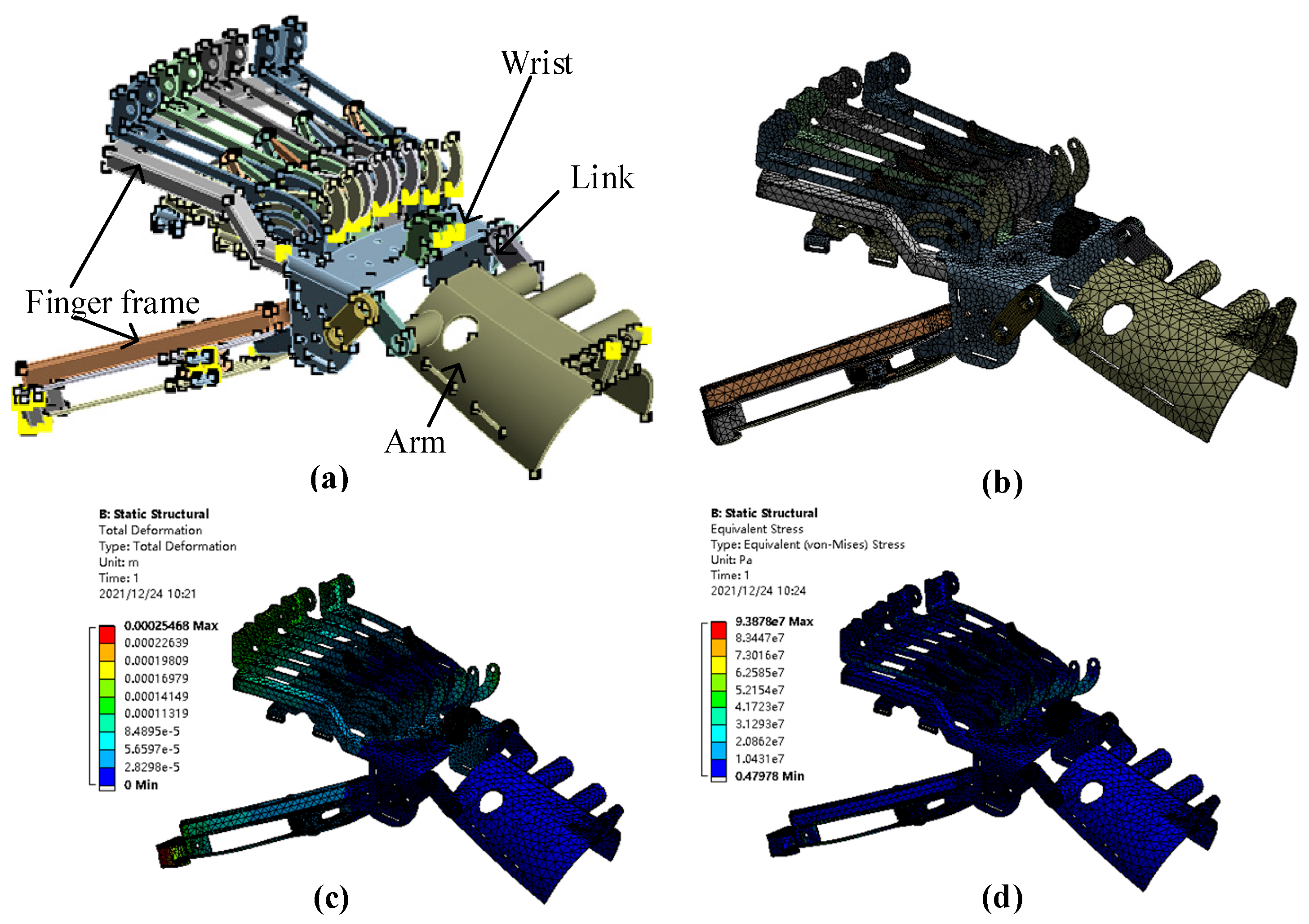
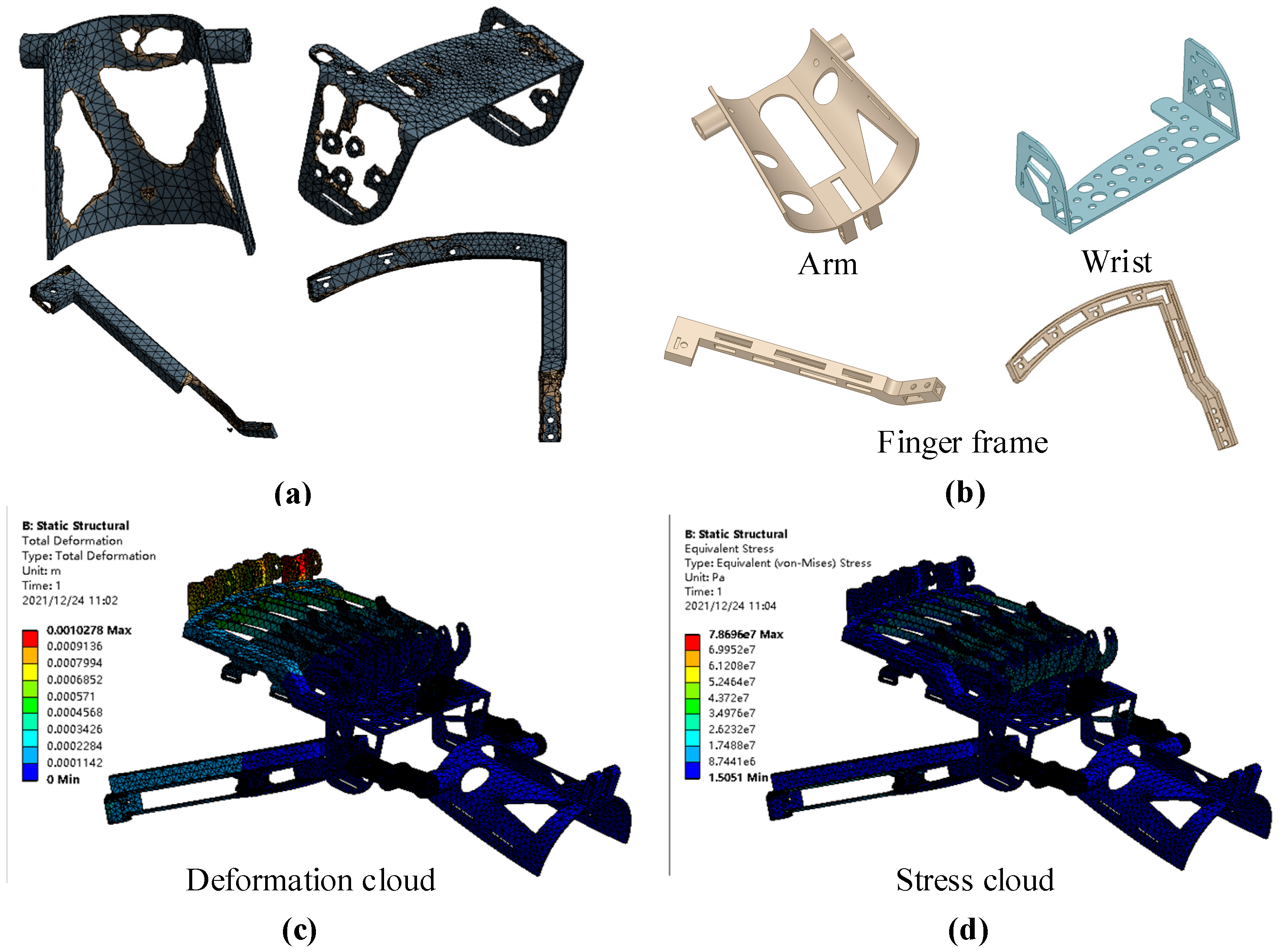
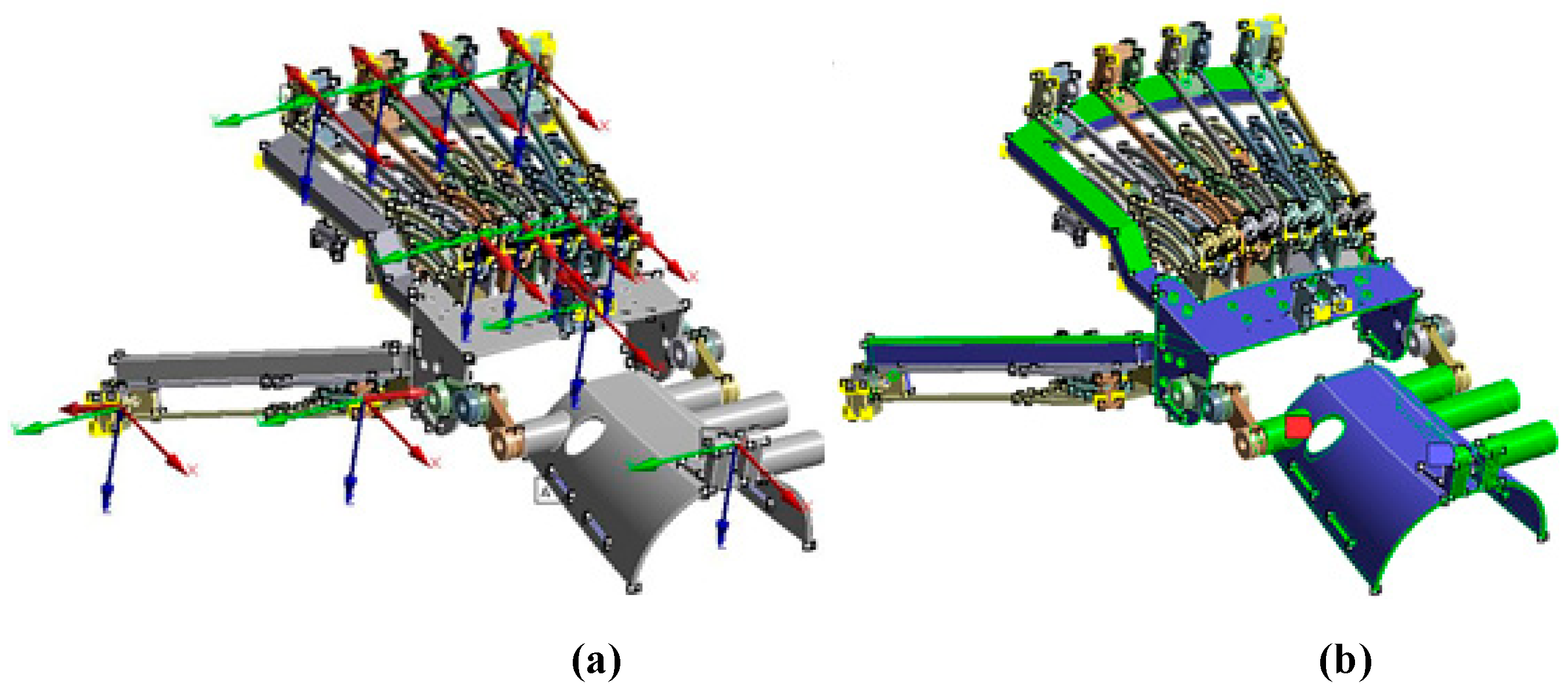
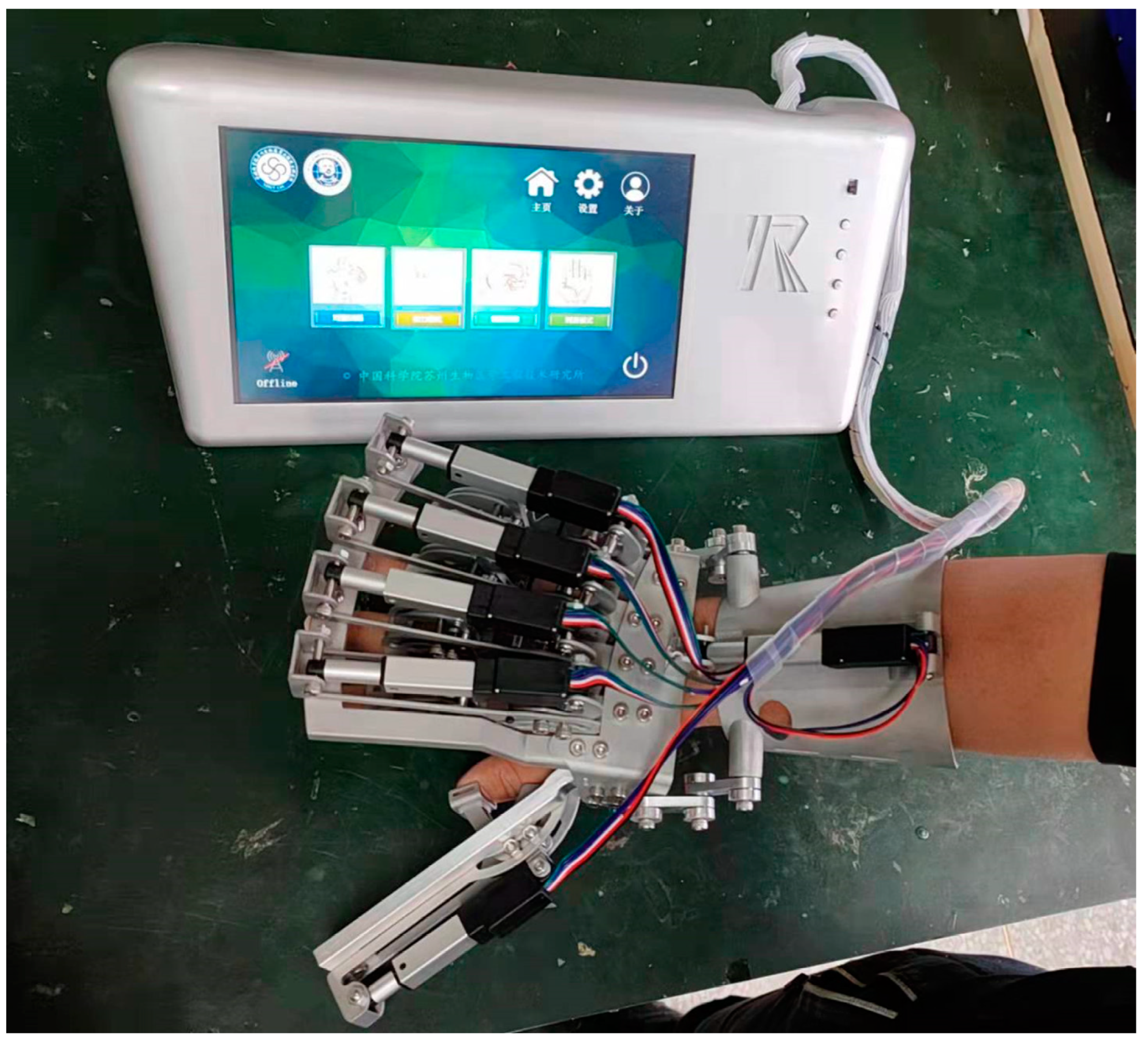

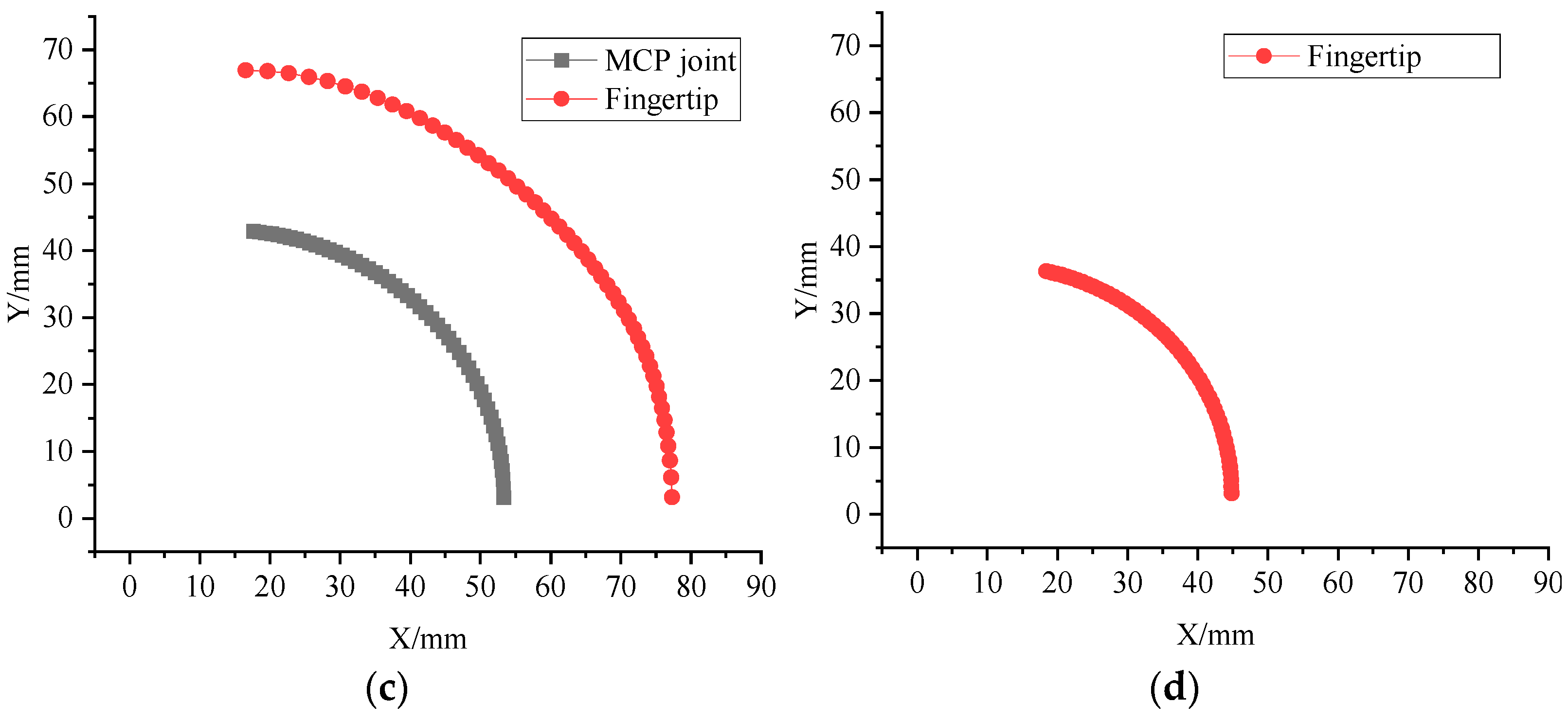

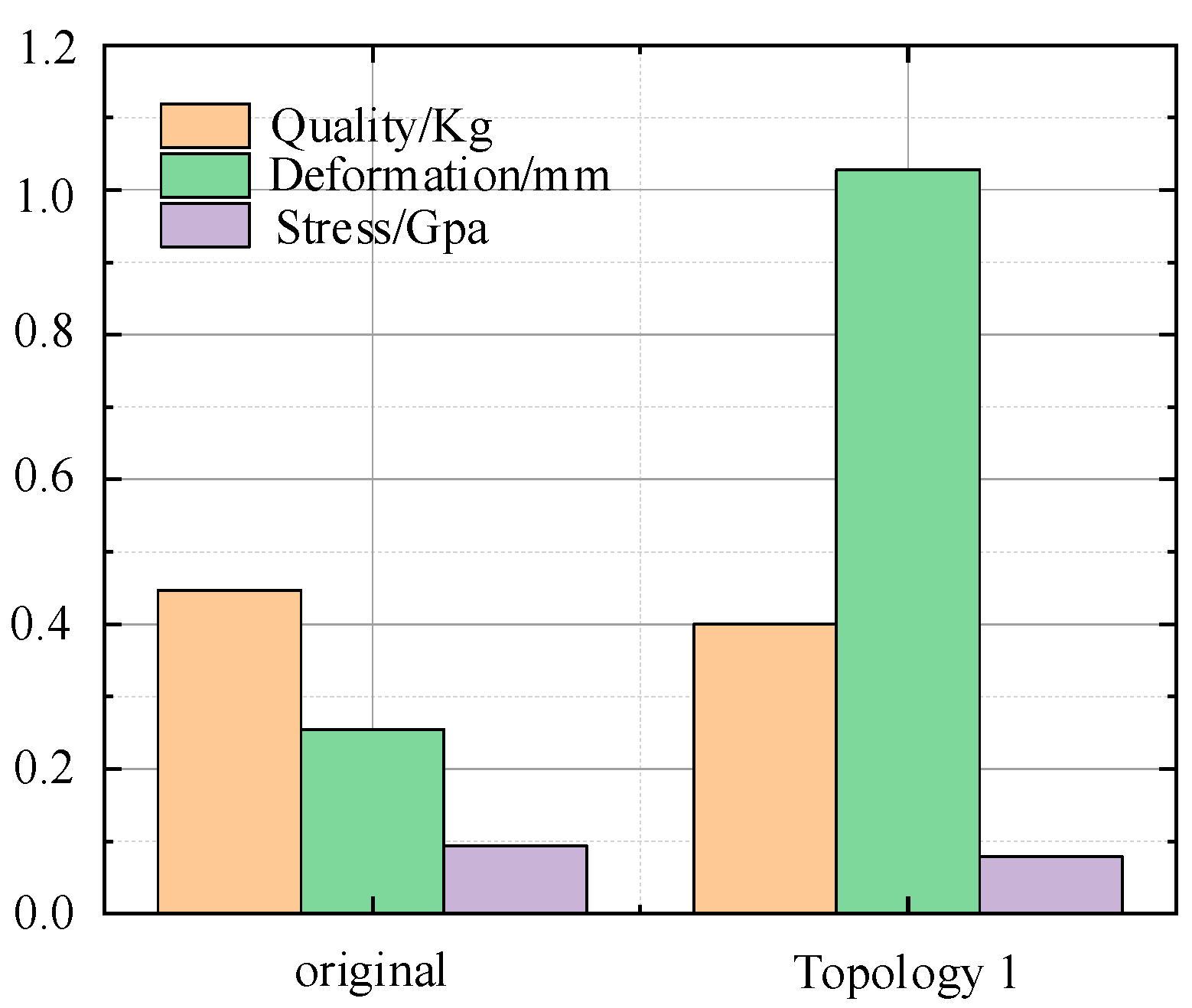
Publisher’s Note: MDPI stays neutral with regard to jurisdictional claims in published maps and institutional affiliations. |
© 2022 by the authors. Licensee MDPI, Basel, Switzerland. This article is an open access article distributed under the terms and conditions of the Creative Commons Attribution (CC BY) license (https://creativecommons.org/licenses/by/4.0/).
Share and Cite
Guo, K.; Lu, J.; Liu, C.; Yang, H. Development, Research, Optimization and Experiment of Exoskeleton Robot for Hand Rehabilitation Training. Appl. Sci. 2022, 12, 10580. https://doi.org/10.3390/app122010580
Guo K, Lu J, Liu C, Yang H. Development, Research, Optimization and Experiment of Exoskeleton Robot for Hand Rehabilitation Training. Applied Sciences. 2022; 12(20):10580. https://doi.org/10.3390/app122010580
Chicago/Turabian StyleGuo, Kai, Jingxin Lu, Chang Liu, and Hongbo Yang. 2022. "Development, Research, Optimization and Experiment of Exoskeleton Robot for Hand Rehabilitation Training" Applied Sciences 12, no. 20: 10580. https://doi.org/10.3390/app122010580
APA StyleGuo, K., Lu, J., Liu, C., & Yang, H. (2022). Development, Research, Optimization and Experiment of Exoskeleton Robot for Hand Rehabilitation Training. Applied Sciences, 12(20), 10580. https://doi.org/10.3390/app122010580







